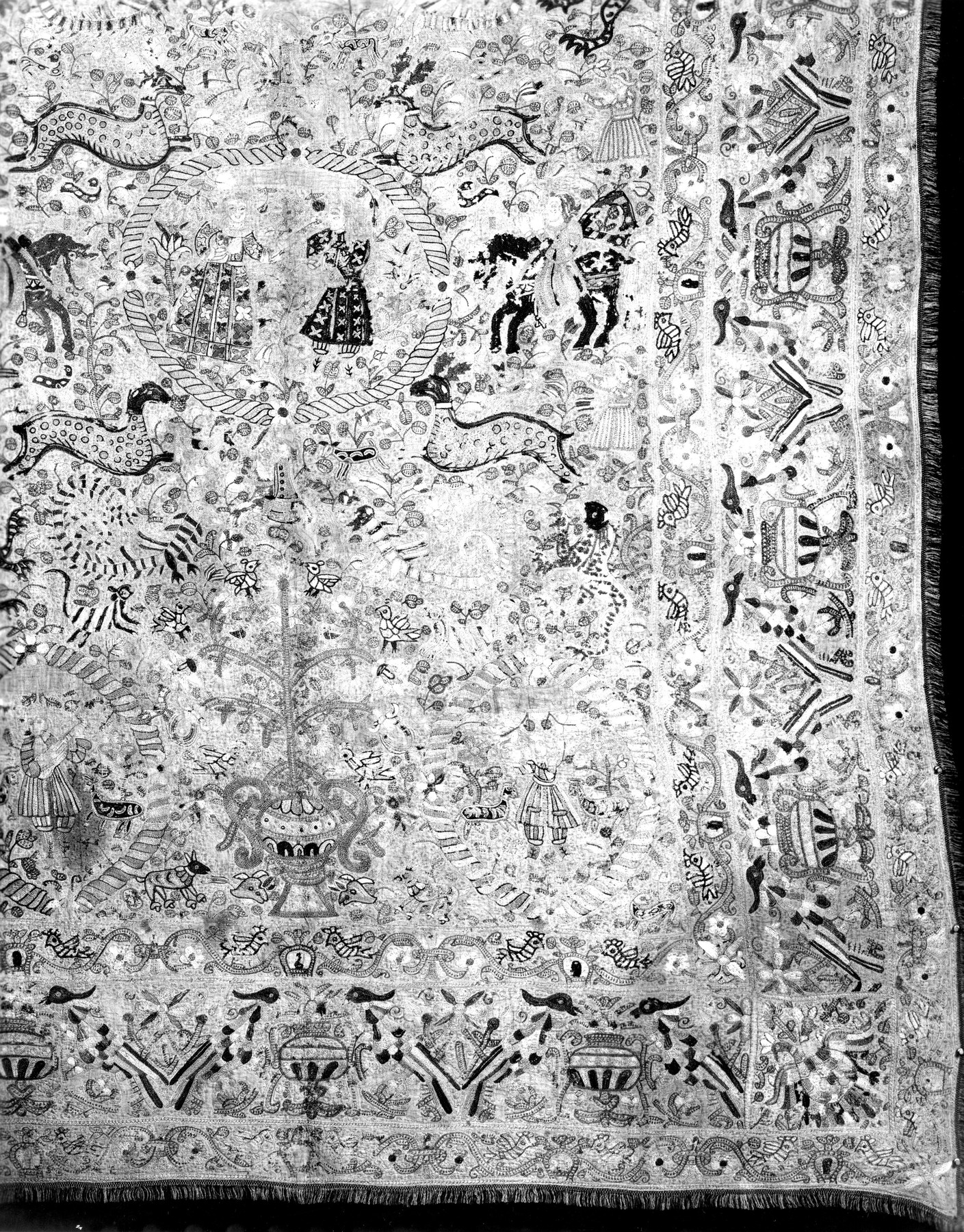Emroidered Bedspread
(Baroque Europe )
This is possibly one of the earliest surviving examples of the bedspreads that Greek maidens on the island of Crete traditionally emroidered for their wedding night. For most of the 17th century, Crete was a Venetian colony, which explains the western costumes of many of the figures seen here. The double-headed eagle was part of the coat of arms of the last Byzantine imperial dynasty; after the Fall of Constantinople in 1453 it became an emblem of the Orthodox Church (cf. Walters 57.791, 57.1042, 57.1083).
Provenance
Provenance (from the French provenir, 'to come from/forth') is the chronology of the ownership, custody, or location of a historical object. Learn more about provenance at the Walters.
Henry Walters, Baltimore, [date of acquisition unknown] by purchase; Walters Art Museum, 1931, by bequest.
Geographies
Greece, Crete (Place of Origin)
Measurements
112 3/16 x 76 in. (285 x 193 cm)
Credit Line
Acquired by Henry Walters
Location in Museum
Not on view
Accession Number
In libraries, galleries, museums, and archives, an accession number is a unique identifier assigned to each object in the collection.
In libraries, galleries, museums, and archives, an accession number is a unique identifier assigned to each object in the collection.
83.167


